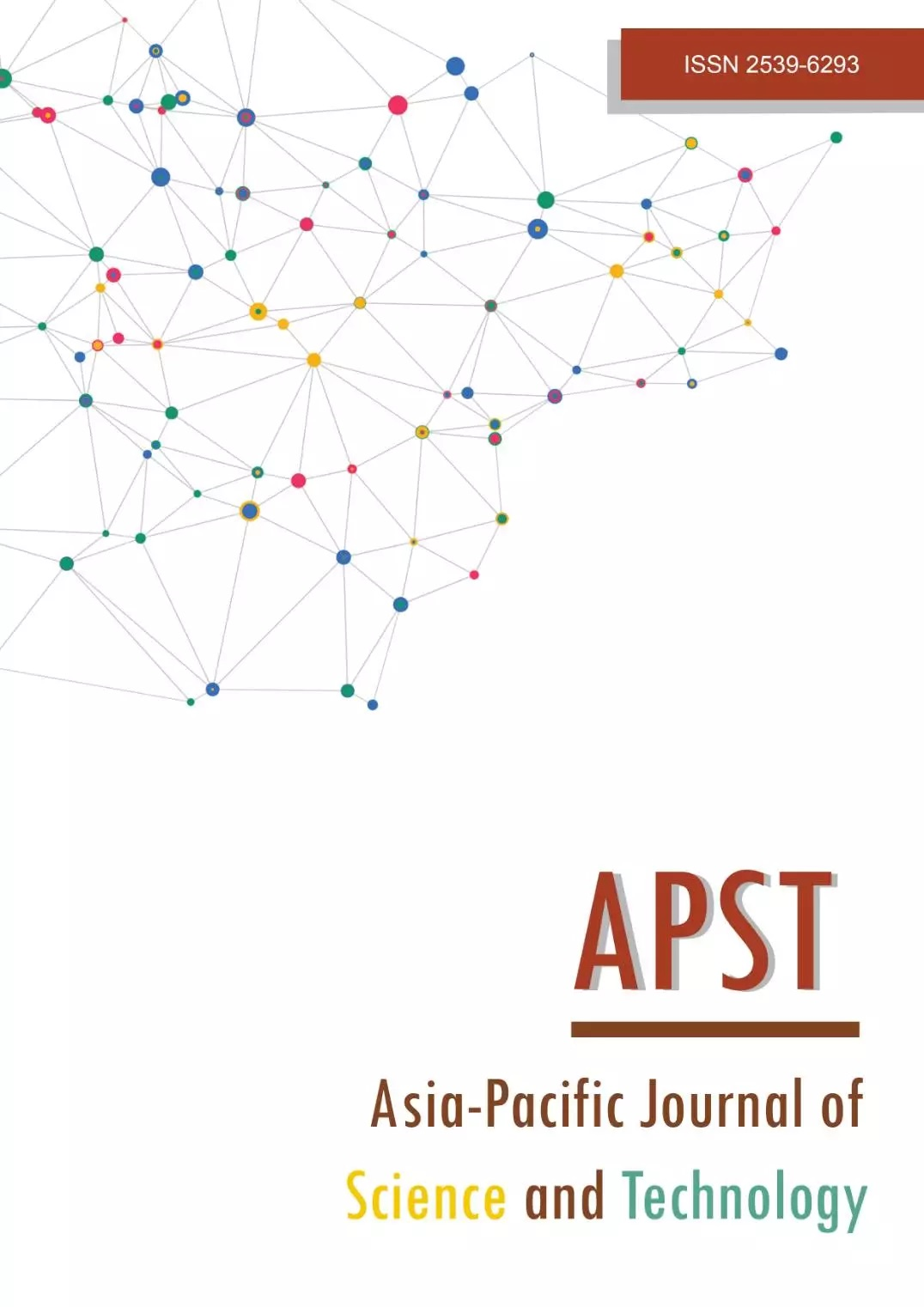Experimental investigation on the carbide precipitation and mechanical property evolution of a cryogenically treated tool steel
Main Article Content
Abstract
In this present paper, the evolution of the carbide precipitation, hardness and impact energy of semi knocked down (SKD) 11 tool steel submitted to three different cryogenic treatment processes were investigated with respect to those that experienced conventional heat treatment. The cryogenic treatment processes in this study were conventional cold treatment, shallow cryogenic treatment, and deep cryogenic treatment. The evolution of carbide precipitation was examined using optical microscope and X-ray diffraction. Hardness evolution of all treated specimens was investigated using the Rockwell hardness test. Charpy V-notch impact test was employed to evaluate the impact toughness energy of all treated specimens. The results show that cryogenic treatment resulted in an increased amount of secondary carbides and the precipitated secondary carbides were observed to be considerably higher in deep cryogenically treated SKD 11. Hardness was enhanced in specimens subjected to cryogenic treatments, especially in deep cryogenic treatment. The decreased impact toughness of cryogenically treated specimens was found and this could be used to reflect the decreased amount of retained austenite and the increased amount of secondary carbides.
Article Details
References
Singh M. Application of steel in automotive industry. Int J Emerg Technol Adv Eng. 2016;6(7):246-253.
Nanesa HG, Touazine H, Jahazi M. Influences of cryogenic process parameters on microstructure and hardness evolution of AISI D2 tool steel. Int J Adv Manuf Technol. 2016;85:881-890.
Chopra SA, Sargade VG. Metallurgy behind the cryogenic treatment of cutting tools: an overview. Mater Today Proc. 2015;2(4-5):1814-1824.
Podgornik B, Paulin I, Zajec B, Jacobson S, Leskovsek V. Deep cryogenic treatment of tool steels. J Mater Process Technol. 2016;229:398-406.
Gobbi SJ, Gobbi VJ, Reinke G, Muterlle PV, Rosa DM. Ultra low temperature process effects on micro-scale abrasion of tool steel AISI D2. Mater Sci Technol. 2019;35(11):1355-1364.
Jurci P, Ptacinova J, Sahul M, Domankova M, Dlouhy I. Metallurgical principles of microstructure formation in sub-zero treated cold-work tool steels - a review. Mater Tech. 2018;106(1):104-113.
Dumasia CA, Kulkarin VA, Sonar K. A review on the effect of cryogenic treatment on metals. Int Res J Eng Technol. 2017;4(7):2402-2406.
Podgornik B, Paulin I, Zajec B, Jacobson S, Leskovsek V. Deep cryogenic treatment of tool steels. J Mater Process Technol. 2016;229:391-406.
Bensely A, Prabhakaran A, Lal DM, Nagarajan G. Enhancing the wear resistance of case carburized steel (En 353) by cryogenic treatment. Guildf. 2005;45(12):747-754.
Bensely A, Senthilkumar D, Lal DM, Nagarajan G, Rajadurai A. Effect of cryogenic treatment on tensile behavior of case carburized steel-815M17. Mater Charact. 2007;58(5):485-491.
Murray P, Rosenthal K, and Pfaller M. Medical microbiology. 8th ed. Philadelphia: ELESVIER;2015.
Japanese Standard Association. Rockwell hardness test-test method. JIS Z 2245;2016.
Japanese Standard Association. Method for charpy pendulum impact test of metallic materials. JIS Z 2242;2005.
Kara F, Karabatak M, Ayyıldız M, Nas E. Effect of machinability, microstructure and hardness of deep cryogenic treatment in hard turning of AISI D2 steel with ceramic cutting. J Mater Res Technol.2020; 9(1):969-983.
Das D, Dutta AK, Ray KK. Sub-zero treatments of AISI D2 steel: part I. microstructure and hardness. Mater Sci Eng A. 2010;527(9):2182-2193.
Das D, Dutta AK, Ray KK. Sub-zero treatments of AISI D2 steel: part II. wear behavior. Mater Sci Eng A. 2010;527(9):2194-2206.
Das D, Dutta AK, Ray KK. Correlation of microstructure with wear behavior of deep cryogenically treated AISI D2 steel Wear. 2009;267(9-10):1371-1380.
Sonar T, Lomte S, Gogte C. Cryogenic treatment of metals-a review. Mater Today Proc. 2018; 5(11):25219 -25228.
Wierszyllowski I, Samolczyk J, Wiecsorek S, Andrzejewska E, Marcinkowska A. The Influence of deep cryogenic treatment on transformation during tempering of quenched D2 steel. Studies of XRD structures, DSC, dilatometry, hardness and impact energy. Defect Diffus Forum. 2008;273-276:731-739.
Gill SS, Singh H, Singh R, Singh J. Cryoprocessing of cutting tool materials - a review. Int J Adv Manuf Technol. 2010;48:175-192.
Collins DN, Dormer J. Deep cryogenic treatment of a D2 cold-work tool steel. Heat Treat Met. 1997; 3:71-74.
Liu H, Wang J, Yang H, Shen B. Effects of cryogenic treatment on microstructure and abrasion resistance of CrMnB high chromium cast iron subjected to sub-critical treatment. Mater Sci Eng A Struct Mater. 2008;478(1-2):324-328.
Liu H, Wang J, Shen B, Yang H, Gao S, Huang S. Effects of deep cryogenic treatment on property of 3Cr13Mo1V1.5 high chromium cast iron. Mater Des. 2007;28:1059-1064.
Zhirafar S, Rezaeian A, Pugh M. Effect of cryogenic treatment on the mechanical properties of 4340 steel. J Mater Process Technol. 2007;186(1-3):298-303.
Rhyim YM, Han SH, Na YS, Lee JH. Effect of deep cryogenic treatment on carbide precipitation and mechanical properties of tool steel. Solid State Phenom. 2006;118:9-14.
Wierszyllowski I. The influence of post-quenching deep cryogenic treatment on tempering processes and properties of D2 tool steel. Studies of structure, XRD, dilatometry, hardness and fracture toughness. Defect Diffus Forum. 2006;258-260:415-420.


